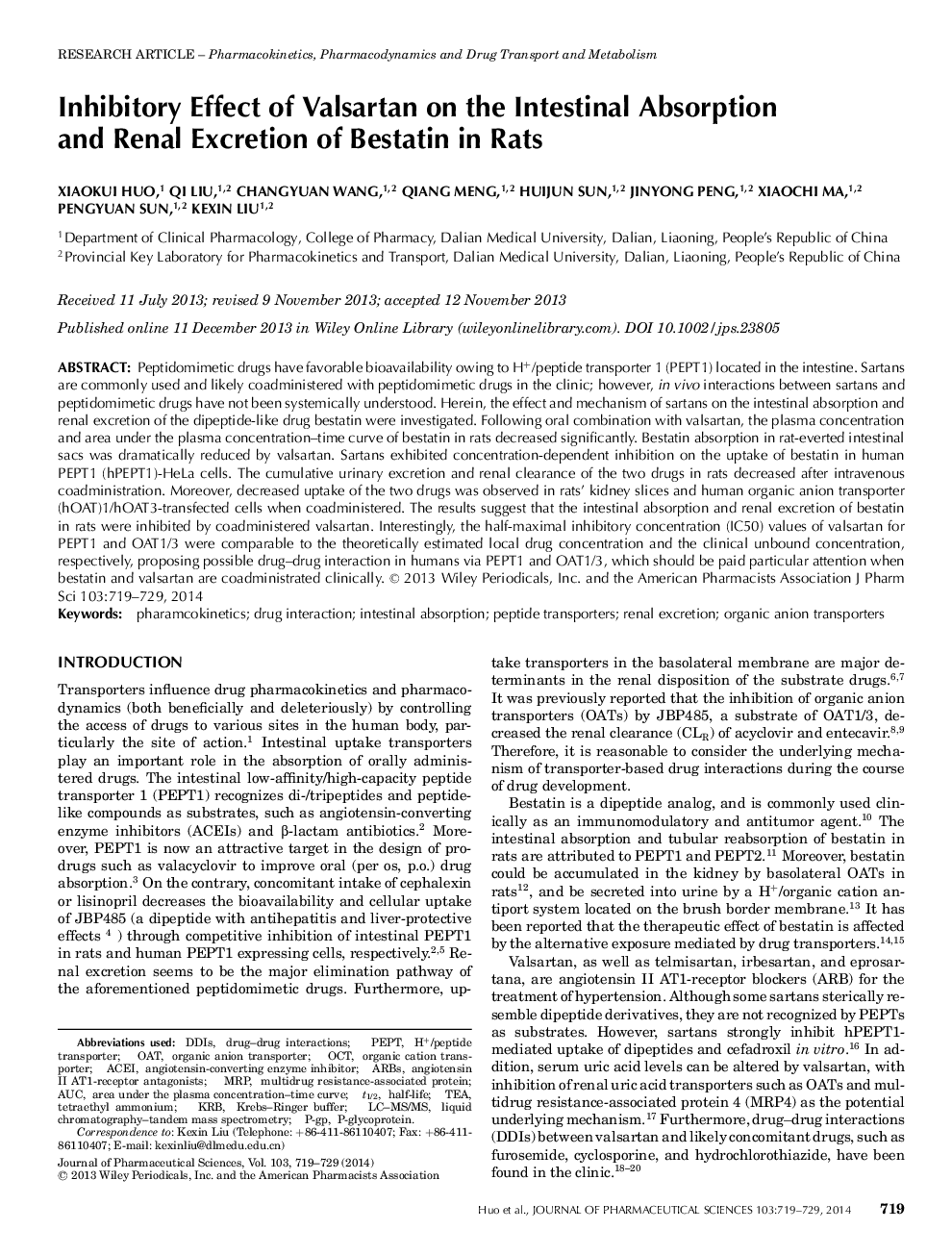| Article ID | Journal | Published Year | Pages | File Type |
|---|---|---|---|---|
| 10162619 | Journal of Pharmaceutical Sciences | 2014 | 11 Pages |
Abstract
Peptidomimetic drugs have favorable bioavailability owing to H+/peptide transporter 1 (PEPT1) located in the intestine. Sartans are commonly used and likely coadministered with peptidomimetic drugs in the clinic; however, in vivo interactions between sartans and peptidomimetic drugs have not been systemically understood. Herein, the effect and mechanism of sartans on the intestinal absorption and renal excretion of the dipeptide-like drug bestatin were investigated. Following oral combination with valsartan, the plasma concentration and area under the plasma concentration-time curve of bestatin in rats decreased significantly. Bestatin absorption in rat-everted intestinal sacs was dramatically reduced by valsartan. Sartans exhibited concentration-dependent inhibition on the uptake of bestatin in human PEPT1 (hPEPT1)-HeLa cells. The cumulative urinary excretion and renal clearance of the two drugs in rats decreased after intravenous coadministration. Moreover, decreased uptake of the two drugs was observed in rats' kidney slices and human organic anion transporter (hOAT)1/hOAT3-transfected cells when coadministered. The results suggest that the intestinal absorption and renal excretion of bestatin in rats were inhibited by coadministered valsartan. Interestingly, the half-maximal inhibitory concentration (IC50) values of valsartan for PEPT1 and OAT1/3 were comparable to the theoretically estimated local drug concentration and the clinical unbound concentration, respectively, proposing possible drug-drug interaction in humans via PEPT1 and OAT1/3, which should be paid particular attention when bestatin and valsartan are coadministrated clinically.
Keywords
AUC, area under the plasma concentration-time curveTEA, tetraethyl ammoniumACEI, Angiotensin-converting enzyme inhibitorLC-MS/MS, liquid chromatography-tandem mass spectrometryMRP, multidrug resistance-associated proteinOAT, organic anion transporterOCT, organic cation transporterP-gp, P-glycoproteinpharamcokineticst1/2, half-lifeDrug interactionIntestinal absorptionPeptide transportersorganic anion transportersRenal excretion
Related Topics
Health Sciences
Pharmacology, Toxicology and Pharmaceutical Science
Drug Discovery
Authors
Xiaokui Huo, Qi Liu, Changyuan Wang, Qiang Meng, Huijun Sun, Jinyong Peng, Xiaochi Ma, Pengyuan Sun, Kexin Liu,
